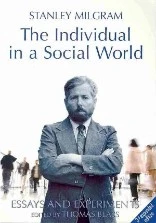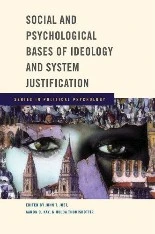Unconscious Racial Attitudes
Posted by The Situationist Staff on April 22, 2011
David Kairys posted his article, titled “Unconscious Racism” (forthcoming Temple Law Review, Vol. 83, 2011) on SSRN. Here’s the abstract.
* * *
This article is the introduction to a law review symposium on unconscious racism and social science and statistical evidence of bias as bases for race discrimination claims, focusing concretely on discrimination in employment and housing. The article starts with an example of unconscious racism in the bail-setting court in Philadelphia. Two drunk-driving cases about a week apart were identical in all respects except the races of the defendants, but the judge, who was not an overt or self-perceived racist, showed empathy to the white drunk driver while his reaction to the black one was dominated by fear.
Unconscious racism specifically, and the biases and motivations of alleged discriminators in general, were not of much interest in civil rights law or litigation until the Supreme Court began, in the mid-1970s, to require specific proof of purposeful discrimination to make out a constitutional violation (less-demanding proof is required for certain statutory violations). The article presents a historical perspective on the development of perceptions of racial wrongdoing in law and in society generally, starting with the relatively recently accepted understanding that racism is wrong. About 50 or 60 year ago, racism on the part of government, private institutions and individuals became socially, morally and culturally wrong. Before that, racism in words and deeds was acceptable and not unusual, if not something like the norm.
However, deep-seated notions about race from slavery, Jim Crow, and segregation were still very much alive and persist today – notions of inferiority and superiority and racially attributed, stereotyped characteristics, like intelligence, perseverance, morality, tendencies to violence and sexual promiscuity. But in the legal realm and in society generally, we wound up focusing our attention almost exclusively on overt, explicit and formal inequality. Once they were banished, we declared a pre-mature victory in the struggle for racial equality. Explicitly racist and overtly segregationist measures were banned, and racial epithets became taboo. But we left in place the legacy of slavery and Jim Crow and segregation, and the remaining racism – the deep-seated, unconscious parts that do not just go away because a court declares explicit racism wrong. Progress was hindered further by a multi-faceted retrenchment by the courts. The adoption of the purposeful discrimination rule in the mid-1970s, which requires specific proof of a racial purpose or motive to establish a discrimination case, made it near impossible for minorities to win. The Supreme Court embraced a formal insensitivity to minority claims, even in circumstances that resemble the worst forms of the discrimination, segregation and disenfranchisement of African Americans that characterized the pre-civil rights past. Then a hypersensitive version of the purposeful discrimination rule was applied to invalidate good-faith affirmative and remedial action, by taking any consideration of race – even if done in good faith to open opportunities and eliminate discrimination – as sufficient proof of purposeful discrimination. Alongside and not unrelated to these legal developments, non-explicit forms of discrimination against African Americans and other minorities grew in number and significance, and became more easily non-explicit.
The use of social science and statistics to prove unconscious racism presents a possibility of dealing with at least some of these problems in the current context.
Download the article for free here.
Related Situationist posts:
- Preference, Principle, & Casuistry
- Responding to Subtle Racial Harassment
- Interview with Professor Eric Knowles
- Race and Implicit American-ness
- “Why Race May Influence Us Even When We “Know” It Doesn’t,”
- “What Are the Legal Implications of Implicit Biases?,”
- “Confronting the Backlash against Implicit Bias,” and
- “The Situation of Situation in Employment Discrimination Law – Abstract.”



















Leave a comment